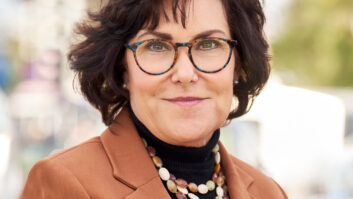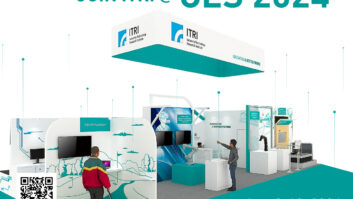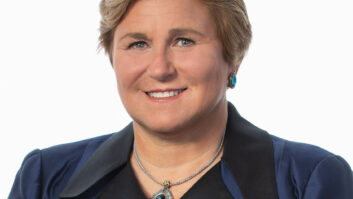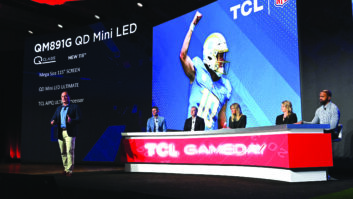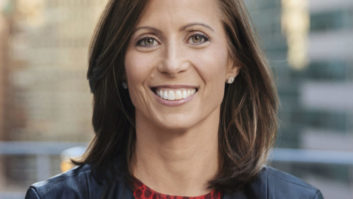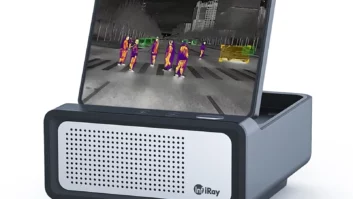ARLINGTON, VA. –
With the fourth quarter
upon us, the 2011 International CES being
two and a half months away, not to mention the
Consumer Electronics Association (CEA) Fall
Forum being held this week in San Francisco,
it seemed like a good time to sit down with
Gary Shapiro, president/CEO of CEA.
Shapiro met with TWICE earlier this month
and discussed a variety of issues — from
changes coming to International CES, which
CEA owns and produces, to economic issues
facing the CE industry as a whole.
TWICE:
What do you think some of the
highlights of the 2011 International CES will
be?
Shapiro:
Without sounding totally optimistic,
there will be no shortage of news. There
are many product announcements that will be
made [representing]
tremendous
innovation, so all
signs point to an
extraordinary CES.
We just announced
we will
have two keynote
speakers from the
automobile industry,
Audi chairman
Rupert Stadler and
Alan Mulally, CEO of Ford Motor Company.
They join Microsoft’s Steve Ballmer, Verizon’s
Ivan Seidenberg and and Samsung’s Boo-Keun
Yoon as 2011 CES keynote speakers. And we
have other super senior-level executives attending
too, which haven’t been announced.
One of the things that I am beyond thrilled is
that we just received an award for being America’s
Greenest Show for the 2009 International
CES. This is huge. The green theme will continue
during the 2011 show. We are a very green
industry and we want to get that message communicated
at our show. We will again have the
Sustainable Planet portion of CES where companies
introduce their green products.
TWICE:
Speaking of the upcoming show,
why has CEA decided to create a CES Connected
Appliances TechZone for major appliances?
Shapiro:
The trend is that many of these
products connect with the Internet. They aren’t
just boring white products anymore. GE Appliances,
Kenmore and Bissell have signed up
and there will be others. We think that this is
a natural extension of the CES. The products
are designed to network and connect and improve
consumers’ lives. And they save energy
which is also a theme at CES.
Including appliances in CES matches the
philosophy of the show, which has always been
to go after those areas that can help provide
attendees with ideas … on how to expand their
businesses, and where they can learn about
new technology. It is not only the convergence,
but the serendipity of finding something new
which will make a difference for your business.
TWICE:
What was the reaction to the rerecent
CEA 3D National Demo Days effort?
Shapiro:
The degree of support and participation and
enthusiasm that was generated was quite amazing.
The challenge the industry faces were that the expectations
at the beginning were off the roof. 3D has been positioned
as a new product. It is not a new product. It is an
amazing feature that will enhance viewing. The message
we have to get across is that 3D is part of a great TV set.
It can be watched in 2D. 3D is has to be experienced to
be understood.
Sixty of our member retailers, including Best Buy,
Comp-USA, Fry’s Sam’s Club, Sears and lots of specialty
retailers, hosted special events, promotions and demos.
It was critical ESPN got on board. We were concerned
would have the same demo over and over. ESPN provided
40 hours of 3D content that weekend. We also did a
media tour which went to 30 different sessions to cities
around the country and included a TV audience of over a
million viewers. We did it from ESPN in Bristol, and CEA’s
Megan Pollack was on with ESPN’s Dana Jacobsen — they
did a promotional spot. Commercials
promoted the event.
We provided retailers with
marketing and PR messaging,
3D content, plus training
materials.
The results were good.
Seventy-two percent of the
retailers said they want us to
do it again, over two-thirds
said that it helped that shoppers
were more interested in
3D, and most of the retailers are saying they are seeing
increased inquiries about 3D.
TWICE:
Since 2003 CEA has been accepting retailers
as members. How has recruitment been going?
Shapiro:
I think it is going phenomenally well. If all
goes according to our nominating committee [this week],
Randy Fry of Fry’s will become chairman of CEA. Gary
Yacoubian was elected chairman when he was with
MyerEmco and then went to Monster. Best Buy, Walmart,
Sears, Amazon, Crutchfield, eBay, RadioShack and
QVC. Twenty-two percent of our members are now retailers.
We have around 2000 members, so we have over
400 retail and integrator members.
We provide retailers certification training, financial management
services, our market research … a suite of member
savings programs for discounts on business services.
And they can spend face time with CEOs of suppliers and
competitors in a non-selling environment to establish relationships
and become better business people.
TWICE:
Industry executives have said for more than a
year that CE sales won’t get back on track until there is
more job creation in the U.S. What can the CE industry
do to create more design, engineering, manufacturing or
retail jobs here?
Shapiro:
First of all, the CE industry is doing better than
almost any other industry in the U.S. despite the current
economy. You can make the case that the consumer electronics
industry is pulling along the U.S. economy now.
For example, Apple products are creating a phenomenal
amount of U.S. jobs — applications designers, retail, others,
improvements and efficiencies.
The role of the CEA and the industry itself is that there
is a framework of innovation and the ability to introduce
and sell new products. Jobs will flow when Americans
have confidence in future economic growth. But there
can’t be confidence when government is continually attacking
business. We have the second highest corporate
tax rate in the world. When taxes are uncertain,
when new rules keep coming, when new mandates
keep coming, we are in a very difficult place now as
a country.
But the industry itself is going to survive with or without
the U.S., and that is what we have to realize. We
are in a global economy. The best thing a government
can do is create an environment where innovation or
whatever the country is good at can prosper.
Our nation is not one that is well-suited to the type of
low-cost manufacturing that China, Indonesia and Vietnam
are. We are really good at coming up with creative,
innovative ways of solving problems.
TWICE:
For those non-CEA members, what is the
Innovations Movement?
Shapiro:
The Innovations Movement is focused on getting
Americans to agree with our position that innovation
is the best chance the United States has for economic
growth. And innovation requires free trade, attracting the
best and the brightest, [having] reasonable corporate taxes
and getting spending under control. Those are the basics
of the Innovation Movement platform. We have 80,000
people signed up in a year, and we hope that a new Congress
will be more sympathetic to these positions.
But even if you look at the Tea Party, which is hard to
define what it is precisely except being against big government
and big government spending, it is not an inconsistent
theme. There are Americans concerned about
the future of the U.S. economy. So that is a theme that
is resonating with our leadership and leadership in other
industries.






